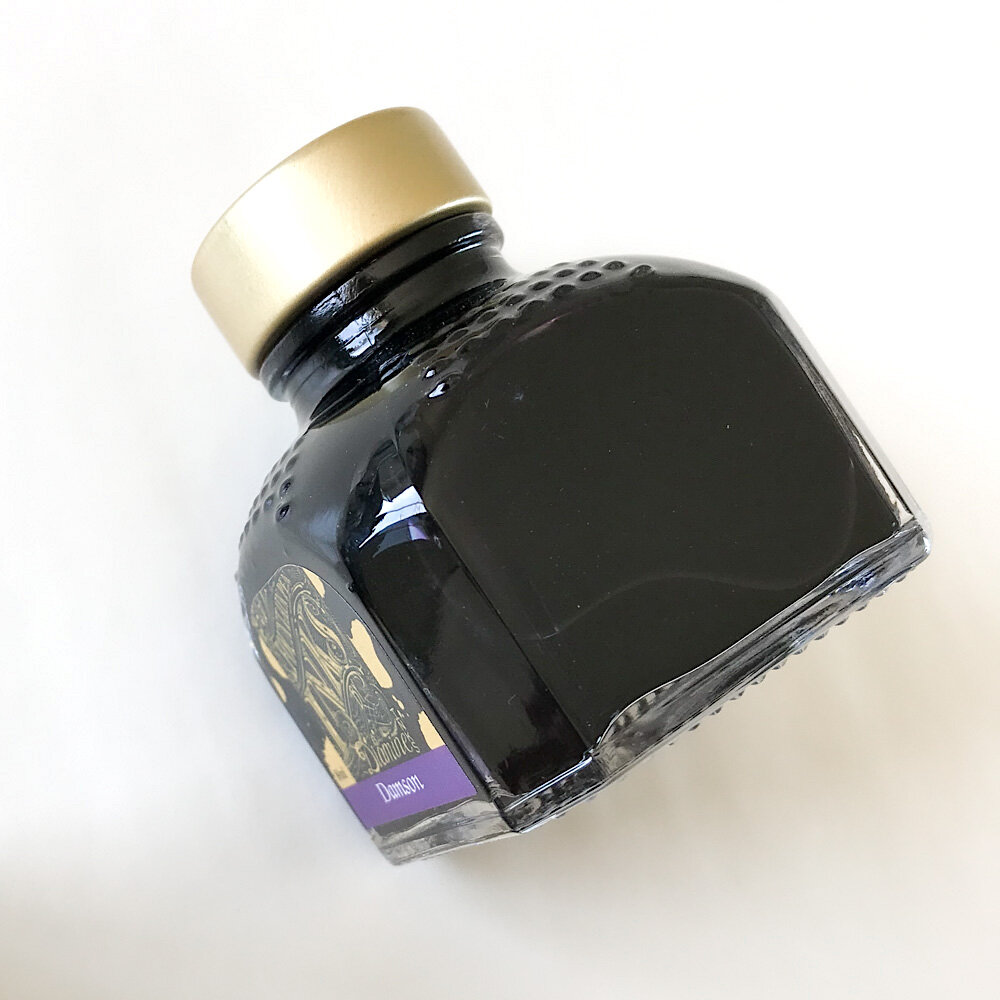Three reasons why you might prefer using bottled ink for your fountain pen, and how to do it.
The why;
1.) It’s environmentally friendly
2.) You can swap and change colours easily and as often as you like
3.) It’s economical
(4.) The bottles are pretty (a bonus point)
It’s environmentally friendly Fountain pens are already a more considered choice than plastic disposable pens as you don’t have to replace the whole pen every time the ink runs out. (Also how much nicer to have a treasured pen that stays with you!) Using bottled ink (from glass bottles) is the final step to reduce your single use pen plastic, as once you have your converter you can refill again and again, rather than throwing away the plastic cartridges.
You can swap and change colours easily as often as you like One of the great things about owning a fountain pen is the endless choice of inks. If you like to swap and change regularly, a converter and bottles of ink are ideal because you don’t have to wait for a cartridge to run out before swapping colours. You simply empty the cartridge back into the bottle, wash it and your pen nib out, and fill it with another colour. Also, because the ink is being drawn up through the end of the nib, the ink flow is ready to go straight away, there’s no ‘dry writing’ waiting for a new ink to flow through the pen, which you can sometimes get when you’ve washed your pen out and inserted a new regular cartridge. (note; your pen only needs to be washed out if you’re changing colours and don’t want the colour to be a muddy mix of the two for the first page of writing)
It’s economical Depending on the brand, more often than not bottled inks are much cheaper for the amount of ink you get than cartridges. Great if you do a lot of writing such as uni notes!
The bottles are pretty (a bonus point) I mean, an old fashioned looking glass bottle of brightly coloured ink. It looks pretty on your desk and that’s a reason in my book.
The how;
Using a converter;
Note I’ll be taking you through how to use the Kaweko mini converter with the Kaweko Sport pens, because they’re my favourite and they’re what I sell. Most other pens and converters will be quite similar, but it’s best to check with the manufacturer’s instructions.
Unscrew your pen barrel and remove the current cartridge if there is one. Wash your pen out (if switching colours) by holding the bottom half of the pen under running water until the water runs clear through the nib, then swishing it about under water for a few seconds. Air dry overnight ideally, or use kitchen roll to dry as best as possible.
Insert your converter as you would insert a regular cartridge.
Have some tissue or kitchen roll handy. Open up your bottle of ink and dip the nib of the pen into the ink, almost up to the plastic edge of the pen. Pull the end of the piston out and pump up and down a few times until the piston draws ink up into the cartridge. Pump until most of the cartridge is full, removing the air pocket.
Remove any excess ink from the barrel using the tissue, and dap the nib a few times to catch any excess ink there.
Screw up the barrel of the pen and you’re ready to write! I suggest doing a few squiggles on a piece of paper before writing or storing to reduce the chance of an initial ink blob or pen leak.
To change ink colours, simply unscrew the pen, and holding the nib back over the ink bottle, press the piston down to expel the ink. Wash the pen nib out as before and wash the converter by holding it under water and pumping up and down a few times.
Easy peasy.
Ink cartridges do still certainly have a place though, and the Herbin tins and Kakweko boxed cartridges will forever have a place in my heart and on my desk. They’re a great way to test new colours, they’re easily portable and convenient. The choice is yours! (or if you’re like me, you’ll prefer a bit of both worlds!)











